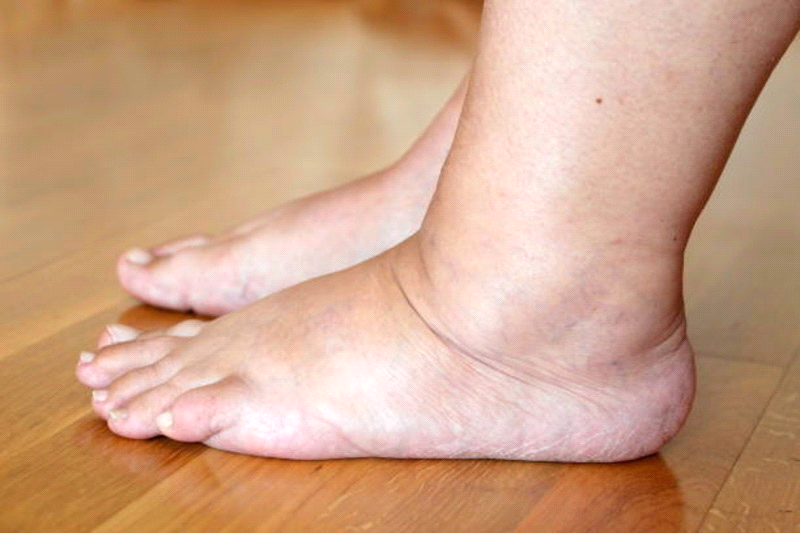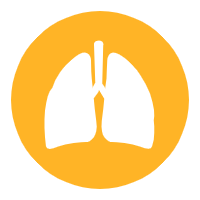Edema, also referred to as swelling, is a medical condition characterized by the buildup of fluid in the body's tissues. It can impact different areas of the body, including the legs, ankles, feet, and hands. This blog post aims to delve into the causes, symptoms, diagnosis, treatment options, prevention methods, and indications for seeking medical assistance in cases of edema.
Causes of Edema

Edema can be caused by a wide range of factors, both medical and lifestyle-based. Some of the most common causes include:
- Venous insufficiency: When veins in the lower extremities fail to efficiently return blood to the heart, it can result in fluid pooling, leading to the occurrence of edema.
- Heart failure: In instances of cardiac insufficiency, the heart is incapable of adequately pumping blood, causing fluid retention in bodily tissues and subsequent development of edema.
- Kidney disease: The kidneys play a crucial role in maintaining fluid balance within the body. If renal function is impaired, it can lead to fluid accumulation and the manifestation of edema.
- Pregnancy: Edema frequently occurs during pregnancy as a result of heightened blood volume and pressure on the pelvic veins.
- Medications: Specific medications, including those for high blood pressure, nonsteroidal anti-inflammatory drugs (NSAIDs), and certain diabetes medications, can induce edema.
- High-salt diet: Consumption of a diet rich in sodium can contribute to the development of edema.
- Sitting or standing for long periods: Immobility can cause fluid to accumulate in the tissues, especially in the lower legs, leading to edema.
This list is not exhaustive, and many other potential causes of edema exist. Always consult a healthcare professional if you are experiencing persistent swelling.
Symptoms of Edema
The primary symptom of edema is swelling in the affected area. The swelling may be accompanied by skin changes, such as tightness, redness, or shiny skin. In some cases, individuals may also experience discomfort, pain, or a feeling of heaviness in the swollen area.
Diagnosis
To diagnose edema, healthcare professionals typically perform a physical examination, assess the patient's medical history, and may order additional diagnostic tests. During the physical examination, the healthcare provider will look for visible signs of swelling and assess the affected area's temperature, color, and texture.
They will also inquire about the patient's medical history to identify any underlying conditions or medications that may contribute to edema. In some cases, diagnostic tests like,
- Blood Tests.
- Urine Analysis.
- Imaging Studies.
Treatment Options

The treatment of edema largely depends on the underlying cause. Here are some options:
- Medications: Diuretic medications, also known as water pills, can help increase your kidneys' output of sodium, which in turn, will aid in releasing the retained fluid. These are often prescribed in cases of heart failure, kidney disease, or liver disease.
- Compression Therapy: Compression garments, such as stockings, gloves, or sleeves, can be used to apply pressure to the affected areas, promoting fluid drainage. This is particularly useful for edema caused by venous insufficiency.
- Elevation: Raising the swollen area above the level of the heart can help to reduce swelling and discomfort. This is often recommended for those suffering from edema in the legs or arms.
- Dietary Changes: Reducing sodium intake can help prevent water retention in the body, which may alleviate edema symptoms. Consuming a balanced diet with adequate amounts of protein may also aid in managing certain types of edema.
- Exercise: Regular physical activity can improve circulation, preventing fluid from pooling in your extremities. Always consult with a healthcare professional before initiating any new exercise regimen.
- Massage: Gentle massage can help to move fluid from the swollen area. It is important to always direct the massage towards the heart.
- Managing Underlying Conditions: If edema is caused by an underlying condition, such as heart failure, kidney disease, or liver disease, treating the condition can help to alleviate the edema.
Prevention of Edema
While not all cases of edema can be prevented, adopting healthy lifestyle habits can help reduce the risk. These habits include maintaining,
- A Balanced Diet.
- Exercising Regularly.
- Avoiding Prolonged Sitting or Standing,
- Managing Underlying Conditions like Heart or Kidney Disease.
It is crucial to follow any prescribed treatment plans for existing medical conditions to minimize the chances of developing edema.
When to Seek Medical Help?
In some cases, edema may be a sign of an underlying medical condition that requires prompt attention. It is essential to be aware of the red flags and warning signs that indicate the need for medical help.
Seek medical assistance if you experience sudden or severe swelling, difficulty breathing, chest pain, or if the swelling is accompanied by other concerning symptoms.
Conclusion
Edema, or swelling, can be a distressing condition that affects various individuals. Understanding the causes, symptoms, diagnosis, treatment options, prevention methods, and when to seek medical help for edema is crucial for healthcare professionals, the general public, and patients dealing with this condition. By staying informed and taking appropriate measures, individuals can effectively manage edema and improve their quality of life.




